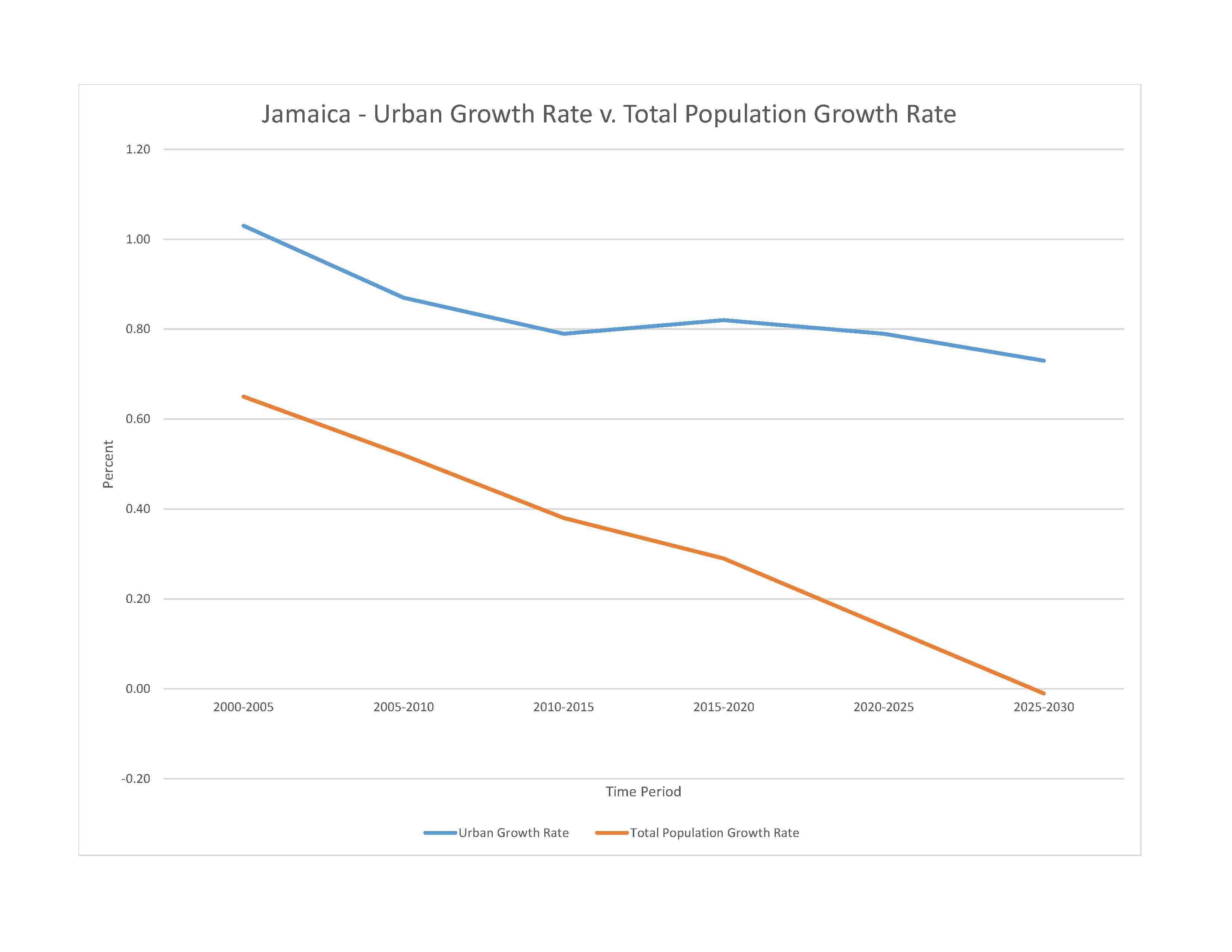
2,820,982 (2023 est.)
noun: Jamaican(s)
adjective: Jamaican
Black 92.1%, mixed 6.1%, East Indian 0.8%, other 0.4%, unspecified 0.7% (2011 est.)
English, Jamaican patois
Protestant 64.8% (includes Seventh Day Adventist 12.0%, Pentecostal 11.0%, Other Church of God 9.2%, New Testament Church of God 7.2%, Baptist 6.7%, Church of God in Jamaica 4.8%, Church of God of Prophecy 4.5%, Anglican 2.8%, United Church 2.1%, Methodist 1.6%, Revived 1.4%, Brethren 0.9%, and Moravian 0.7%), Roman Catholic 2.2%, Jehovah's Witness 1.9%, Rastafarian 1.1%, other 6.5%, none 21.3%, unspecified 2.3% (2011 est.)
0-14 years: 24.11% (male 346,566/female 333,673)
15-64 years: 65.8% (male 914,208/female 942,134)
65 years and over: 10.08% (2023 est.) (male 135,388/female 149,013)
total dependency ratio: 38
youth dependency ratio: 28
elderly dependency ratio: 13.4
potential support ratio: 7.4 (2021 est.)
total: 30.5 years (2023 est.)
male: 29.7 years
female: 31.3 years
0.09% (2023 est.)
15.8 births/1,000 population (2023 est.)
7.4 deaths/1,000 population (2023 est.)
-7.4 migrant(s)/1,000 population (2023 est.)
population density is high throughout, but increases in and around Kingston, Montego Bay, and Port Esquivel
urban population: 57.4% of total population (2023)
rate of urbanization: 0.79% annual rate of change (2020-25 est.)

597,000 KINGSTON (capital) (2023)
at birth: 1.05 male(s)/female
0-14 years: 1.04 male(s)/female
15-64 years: 0.97 male(s)/female
65 years and over: 0.91 male(s)/female
total population: 0.98 male(s)/female (2023 est.)
21.2 years (2008 est.)
note: data represents median age at first birth among women 25-29
99 deaths/100,000 live births (2020 est.)
total: 10.9 deaths/1,000 live births (2023 est.)
male: 12.2 deaths/1,000 live births
female: 9.6 deaths/1,000 live births
total population: 76 years (2023 est.)
male: 74.3 years
female: 77.9 years
2.05 children born/woman (2023 est.)
1 (2023 est.)
N/A
improved: urban: 98.3% of population
rural: 93.9% of population
total: 96.4% of population
unimproved: urban: 1.7% of population
rural: 6.1% of population
total: 3.6% of population (2020 est.)
6.6% of GDP (2020)
0.53 physicians/1,000 population (2018)
1.7 beds/1,000 population (2017)
improved: urban: 98.6% of population
rural: 99.4% of population
total: 98.9% of population
unimproved: urban: 1.4% of population
rural: 0.6% of population
total: 1.1% of population (2020 est.)
24.7% (2016)
total: 3.46 liters of pure alcohol (2019 est.)
beer: 1.19 liters of pure alcohol (2019 est.)
wine: 0.25 liters of pure alcohol (2019 est.)
spirits: 1.66 liters of pure alcohol (2019 est.)
other alcohols: 0.35 liters of pure alcohol (2019 est.)
total: 9.4% (2020 est.)
male: 15% (2020 est.)
female: 3.8% (2020 est.)
2.5% (2018/19)
32.7% (2023 est.)
6% of GDP (2021 est.)
definition: age 15 and over has ever attended school
total population: 88.7%
male: 84%
female: 93.1% (2015)
total: 12 years
male: 11 years
female: 13 years (2015)
NOTE: The information regarding Jamaica on this page is re-published from the 2024 World Fact Book of the United States Central Intelligence Agency and other sources. No claims are made regarding the accuracy of Jamaica 2024 information contained here. All suggestions for corrections of any errors about Jamaica 2024 should be addressed to the CIA or the source cited on each page.
This page was last modified 04 May 24, Copyright © 2024 ITA all rights reserved.